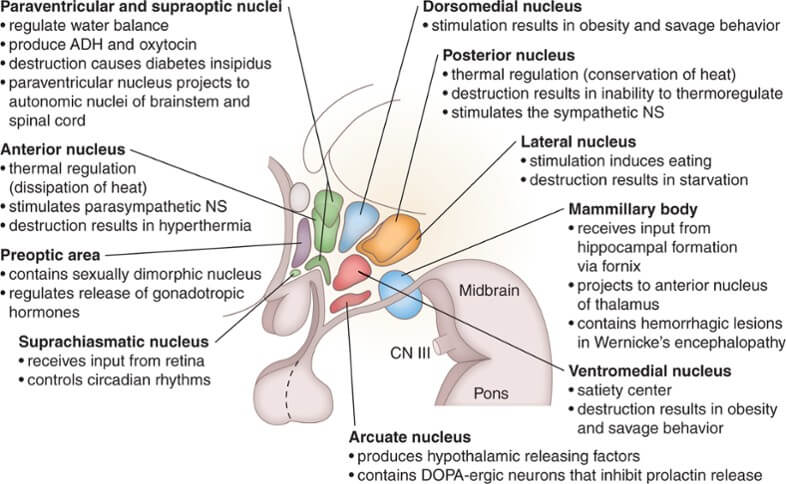
- Larger nuclei: Larger nuclei of thalamus are subdivided into three groups which lie in:
- Anterior part
- Medial part
- Lateral part.
- Smaller nuclei: These nuclei are related to surface or white matter lamina of thalamus. These are smaller collection of nerve cells as following:
- Intralaminar nuclei
- Midline nuclei or paraventricular nuclei
- Reticular nuclei.
This part contains anterior thalamic nuclei. These nuclei is concerned with.
- Function which is associated with that of limbic system.
- Emotional tone.
- Mechanism of recent memory.
Medial part of thalamus contains many smaller nuclei and a large medial dorsal or dorsomedial nucleus. The dorsomedial nucleus is made up of anteromedial magnocellular and posterolateral parvocellular parts. Medial part of thalamus is concerned with integration of large number of sensory informations (somatic as well as visceral) and correlation with emotional feelings.
Lateral part
Nuclei of lateral part are divided into a dorsal tier and a ventral tier. Dorsal tier nuclei are – (from anterior to posterior)
- Lateral dorsal nucleus
- Lateral posterior nucleus
- Pulvinar.
- Ventral anterior nucleus: It influences activities of motor system.
- Ventral lateral nucleus: This nucleus also influences motor activities.
- Ventral posterior nucleus: It is divided into ventroposteromedial and ventroposterolateral nuclei. These nuclei receive various sensory inputs (somatic as well as visceral) and convey these to sensory areas of cerebral cortex
Source: Easy and Interesting Approach to Human Neuroanatomy (Clinically Oriented) (2014)